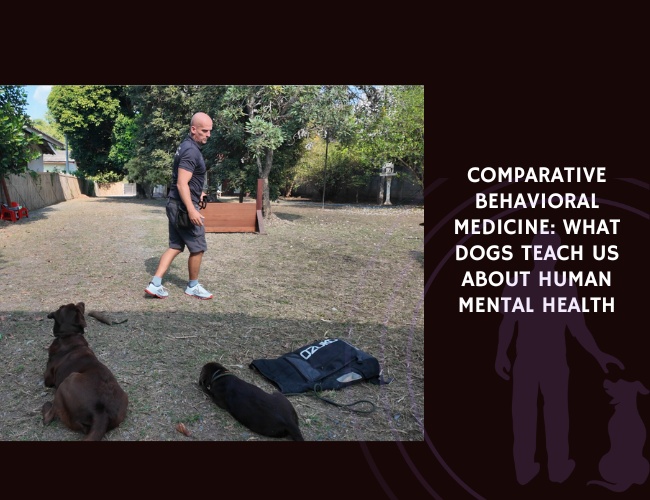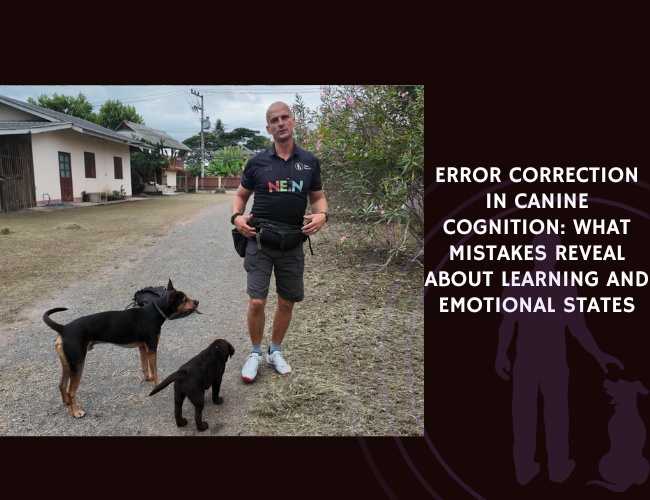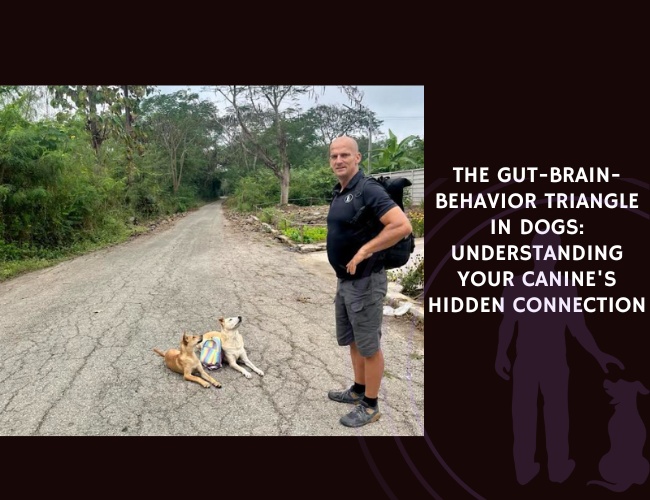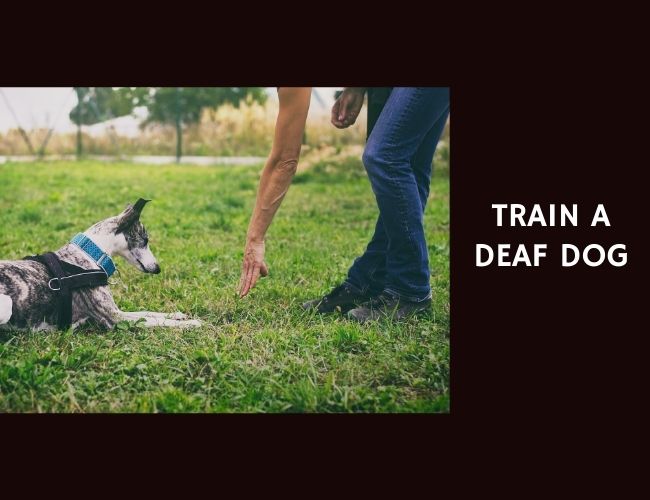Introduction: The Mirror Between Species
Have you ever noticed how your dog seems to understand your emotions before you fully recognize them yourself? This profound connection between humans and dogs extends far beyond simple companionship—it reveals a remarkable scientific frontier where veterinary and human medicine converge. Welcome to the fascinating world of comparative behavioral medicine, where our furry friends serve as both patients and teachers in understanding mental health across species.
For centuries, we’ve shared our lives with dogs, but only recently have we begun to appreciate the depth of psychological and neurobiological similarities we share. From anxiety disorders that manifest in surprisingly parallel ways to shared stress responses rooted in ancient evolutionary pathways, dogs offer us a unique window into understanding our own mental health challenges. This isn’t just about treating our pets better—it’s about recognizing that the emotional lives of dogs can illuminate the darkest corners of human psychiatric medicine.
As we explore this emerging field, you’ll discover how your dog’s separation anxiety might mirror human panic disorders, why certain breeds are predisposed to behaviors that resemble human OCD, and how breakthrough treatments tested in veterinary clinics are paving the way for human psychiatric innovations. Let us guide you through this remarkable journey where science, compassion, and the timeless bond between humans and dogs converge to revolutionize our understanding of mental health. 🐾
Understanding Comparative Symptomatology: When Dogs Mirror Human Minds
The Anxiety Spectrum Across Species
Did you know that approximately 70% of dogs exhibit at least one anxiety-related behavioral problem? This striking statistic becomes even more meaningful when we consider that anxiety disorders affect nearly 300 million humans globally each year. The parallels between canine and human anxiety aren’t just superficial—they represent deeply rooted neurobiological patterns that evolution has preserved across our species.
When your dog paces during thunderstorms or becomes destructive when left alone, they’re experiencing something remarkably similar to human anxiety disorders. Separation anxiety in dogs manifests through excessive vocalization, destructive behavior, and inappropriate elimination—symptoms that mirror the physical and emotional distress humans experience during panic attacks. The racing heart, the overwhelming sense of dread, the desperate need for safety—these feelings transcend the species barrier.
Generalized anxiety presents another fascinating parallel. Dogs with this condition show chronic worry-like behaviors: constant vigilance, inability to settle, disrupted sleep patterns, and heightened startle responses. Sound familiar? These are the exact symptoms psychiatrists look for when diagnosing generalized anxiety disorder in humans. Your anxious pup who jumps at every sound and can’t seem to relax is experiencing the canine equivalent of what millions of humans struggle with daily.
Depression and Mood Disorders: The Silent Struggle
Depression in dogs often goes unrecognized because, unlike anxiety, it manifests through absence rather than presence—absence of joy, enthusiasm, and engagement. When a previously playful dog loses interest in walks, stops greeting you at the door, or spends excessive time sleeping, they might be experiencing what veterinary behaviorists now recognize as canine cognitive dysfunction or depression.
The behavioral markers are strikingly similar to human depression:
- Decreased appetite or changes in eating patterns
- Social withdrawal and reduced interaction with family members
- Loss of interest in previously enjoyed activities
- Changes in sleep patterns (both excessive sleeping and restlessness)
- Reduced grooming behaviors and self-care
Research has shown that dogs experiencing depression exhibit altered cortisol rhythms and neurotransmitter imbalances remarkably similar to those found in humans with major depressive disorder. This isn’t anthropomorphism—it’s recognizing that the biological machinery of emotion operates similarly across mammalian species.
Compulsive Behaviors: When Repetition Becomes Disorder
Perhaps nowhere is the similarity between human and canine mental health more apparent than in obsessive-compulsive behaviors. Canine compulsive disorder (CCD) presents with repetitive, seemingly purposeless behaviors that dogs perform to the detriment of their normal functioning. These behaviors aren’t just quirky habits—they’re manifestations of underlying neurological patterns that closely resemble human OCD.
Common compulsive behaviors in dogs include tail chasing, shadow chasing, flank sucking, and excessive licking (acral lick dermatitis). Just as humans with OCD might wash their hands until they’re raw or check locks repeatedly, dogs with CCD perform their rituals with an intensity that suggests genuine psychological distress. The compulsion overrides logic, comfort, and sometimes even self-preservation instincts.
What makes these parallels particularly compelling is that both species respond to similar treatments. SSRIs (selective serotonin reuptake inhibitors) that help humans manage OCD symptoms show similar efficacy in treating canine compulsive disorders. This pharmacological crossover isn’t coincidental—it reflects shared neurochemical pathways that govern repetitive behaviors across species. 🧠
The Shared Neurobiology: One Brain, Two Species
The Stress Highway: Understanding the HPA Axis
At the heart of both human and canine stress responses lies the hypothalamic-pituitary-adrenal (HPA) axis—an ancient biological highway that coordinates our response to threats. When your dog encounters a stressor, whether it’s a trip to the vet or a thunderstorm, their HPA axis activates in virtually the same sequence as yours would when facing a job interview or public speaking engagement.
This biological stress response begins in the hypothalamus, which signals the pituitary gland to release hormones that ultimately trigger cortisol production in the adrenal glands. The elegance of this system lies in its conservation across species—the same molecular cascades that helped our common ancestors survive predators now influence how both you and your dog handle modern stressors. Chronic activation of this system, whether from ongoing anxiety or repeated trauma, leads to similar health consequences in both species: compromised immune function, digestive issues, and increased vulnerability to mood disorders.
Research measuring cortisol levels in dog saliva has revealed daily rhythms that mirror human patterns, with morning peaks and evening troughs. Even more fascinating, dogs living with stressed owners show elevated baseline cortisol levels, suggesting that emotional states can transfer across species through this shared biological system. This biological synchrony isn’t just scientifically interesting—it has profound implications for how we understand and treat stress-related disorders in both species.
Neurotransmitter Networks: The Chemical Messengers of Emotion
The neurochemical orchestra that plays in your brain has a remarkably similar composition in your dog’s brain. Serotonin, dopamine, norepinephrine, and GABA—these chemical messengers that regulate human mood, motivation, and anxiety operate through nearly identical pathways in dogs. This isn’t mere coincidence; it’s evolutionary efficiency at its finest.
When veterinarians prescribe fluoxetine (Prozac) for a dog with separation anxiety, they’re targeting the same serotonin reuptake mechanisms that psychiatrists address when treating human depression. The drug works by increasing serotonin availability in synaptic spaces, improving mood regulation and reducing anxiety—the mechanism is identical whether the patient walks on two legs or four. This pharmacological overlap has opened extraordinary opportunities for translational research, where treatments successful in one species inform therapeutic approaches in the other.
The dopamine system offers another compelling parallel. In both humans and dogs, dopamine drives reward-seeking behavior, motivation, and pleasure. Dysfunction in this system contributes to addiction in humans and can manifest as compulsive behaviors in dogs. When your dog becomes obsessed with fetching to the point of exhaustion, or when certain breeds develop fixations on lights or shadows, we’re witnessing dopaminergic dysregulation that mirrors human behavioral addictions.
Genetic Blueprints: Inherited Vulnerabilities
The genetic architecture underlying behavioral disorders shows remarkable conservation between humans and dogs. Specific breeds demonstrate hereditary predispositions to anxiety, compulsive behaviors, and aggression that parallel familial patterns in human psychiatric conditions. Border Collies and their tendency toward obsessive behaviors, German Shepherds and their heightened anxiety responses, English Bulldogs and their increased risk of cognitive dysfunction—these breed-specific vulnerabilities offer living models of how genetics influence mental health.
Recent genomic studies have identified specific genetic markers associated with fearfulness and anxiety in dogs that correspond to similar variants in humans with anxiety disorders. The GRIN2B gene, for instance, affects glutamate signaling in both species and has been linked to fear responses and anxiety-related behaviors. This genetic overlap isn’t just academically interesting—it suggests that dogs could serve as natural models for understanding how genetic variations translate into behavioral phenotypes.
What makes these genetic parallels particularly valuable is that dogs experience similar environmental pressures to humans—urban living, social isolation, dietary changes—allowing researchers to study gene-environment interactions in real-world contexts rather than laboratory settings. Your anxious Cavalier King Charles Spaniel living in a city apartment might be experiencing the same gene-environment interplay as humans developing anxiety disorders in urban environments. 🧠

Learning, Cognition, and Building Resilience
Error Correction and Adaptive Learning
The way dogs learn from mistakes offers profound insights into resilience building and cognitive flexibility—concepts central to modern psychotherapy. When your dog learns that jumping on guests doesn’t get them attention but sitting politely does, they’re engaging in the same error correction processes that cognitive-behavioral therapy aims to strengthen in humans. This isn’t simple conditioning—it’s complex cognitive restructuring happening in real-time.
Dogs demonstrate cognitive flexibility through their ability to update behavioral strategies based on changing outcomes. A dog who learns that whining at the dinner table no longer produces treats but lying quietly on their bed does, shows the same adaptive learning that helps humans overcome maladaptive thought patterns. This parallel has led to innovative therapeutic approaches where observing and training dogs helps human patients understand their own behavioral patterns.
The process of shaping behavior in dogs—rewarding successive approximations of desired behavior—mirrors the graduated exposure techniques used in treating human phobias and anxiety disorders. When you help your fearful dog overcome their anxiety about car rides by first rewarding them for approaching the car, then sitting in it, then taking short trips, you’re implementing the same systematic desensitization that therapists use to help humans overcome their fears.
Environmental Enrichment: The Foundation of Mental Wellness
The concept of environmental enrichment, long recognized as crucial for zoo animals, has revolutionized both veterinary behavioral medicine and human mental health treatment. A stimulating environment isn’t just nice to have—it’s essential for psychological well-being. Dogs confined to barren environments develop stereotypic behaviors, anxiety, and cognitive decline, just as humans in isolation or unstimulating environments experience deteriorating mental health.
Physical enrichment through varied exercise, sensory enrichment through novel experiences, cognitive enrichment through training and puzzle-solving, and social enrichment through appropriate interactions—these four pillars of canine wellness translate directly to human mental health interventions. The parallels are so strong that many human psychiatric facilities now model their therapeutic environments after successful animal enrichment programs.
Consider how a dog’s mental health improves with regular walks in nature, social play dates, training sessions that challenge their minds, and predictable routines that provide security. These same elements—nature exposure, social connection, cognitive challenges, and structured routines—form the backbone of lifestyle interventions for human depression and anxiety. Your dog’s need for a morning walk might be teaching you more about managing your own mental health than you realize.
Frustration Tolerance and Emotional Regulation
One of the most valuable lessons dogs teach us about mental health involves frustration tolerance and emotional regulation. Watch a well-adjusted dog waiting for their dinner, and you’ll see a masterclass in emotional regulation—they might be excited, even trembling with anticipation, but they’ve learned to manage that emotional intensity to achieve their goal. This ability to tolerate frustration without becoming overwhelmed is exactly what many humans with emotional dysregulation struggle to achieve.
Impulse control training in dogs directly parallels dialectical behavior therapy (DBT) techniques for humans. Teaching a dog to “leave it” when presented with tempting food requires the same prefrontal cortex engagement that humans use when resisting impulsive behaviors. The neural pathways strengthened through this training—pathways that inhibit immediate gratification in favor of longer-term rewards—are identical across species.
The “calm settlement” training that helps hyperactive dogs learn to relax on cue offers insights into human emotional regulation strategies. When a dog learns to go from high arousal to calm on command, they’re demonstrating the same nervous system flexibility that mindfulness meditation aims to develop in humans. The breathing changes, muscle relaxation, and attention shifting that occur when a dog settles are remarkably similar to what happens during human relaxation responses. 😄
Canine Models Advancing Human Psychiatry
Natural Disease Models: When Dogs Develop Human-Like Conditions
Unlike laboratory animals bred specifically for research, dogs develop psychiatric conditions naturally, making them invaluable models for understanding human mental health. Military working dogs returning from deployment have provided unprecedented insights into PTSD, developing symptoms nearly identical to human veterans: hypervigilance, avoidance behaviors, nightmares (evidenced by sleep disturbances and vocalizations), and emotional numbing.
These canine PTSD cases aren’t just similar to human PTSD—they’re providing crucial information about how trauma affects the mammalian brain. Brain imaging studies of affected dogs show similar patterns of amygdala hyperactivity and hippocampal changes seen in human PTSD patients. This natural model has led to breakthrough treatments, including virtual reality exposure therapy adapted for dogs, which is now being reverse-translated for human applications.
Canine cognitive dysfunction syndrome (CDS) in aging dogs presents another remarkable parallel to human Alzheimer’s disease. Dogs with CDS show beta-amyloid plaques, tau protein abnormalities, and neurotransmitter changes virtually identical to human Alzheimer’s patients. They experience disorientation, disrupted sleep-wake cycles, decreased social interaction, and loss of learned behaviors—a clinical picture that mirrors human dementia so closely that dogs are now considered one of the best natural models for testing Alzheimer’s interventions.
Pharmaceutical Testing: From Kennel to Clinic
The path from discovering a potential psychiatric medication to human trials traditionally involves years of rodent studies that often fail to translate to human success. Dogs, with their more complex emotional lives and similar neurobiology to humans, are bridging this translational gap. Medications successful in treating canine anxiety have an remarkably high success rate when adapted for human use, far exceeding the predictive value of rodent models.
The development of novel anxiolytics for dogs has revealed unexpected therapeutic targets for human anxiety. For instance, the discovery that certain probiotics reduce anxiety behaviors in dogs has led to human trials of psychobiotics—beneficial bacteria that influence mental health through the gut-brain axis. This wouldn’t have been possible without observing the real-world effects in naturally anxious dogs living in home environments.
Recent trials of CBD compounds for canine anxiety are providing crucial dosing and efficacy data that inform human studies. Because dogs experience anxiety in social contexts similar to humans—separation, social situations, environmental stressors—their responses to treatment offer more relevant insights than traditional laboratory models. When your veterinarian prescribes a new anxiety medication for your dog, they might be participating in research that will benefit human mental health treatment in the coming years.
Ethical Frameworks: Compassionate Research Across Species
The use of dogs in behavioral medicine research has fostered more ethical and compassionate research paradigms that benefit both species. Unlike traditional laboratory research, most canine behavioral studies involve pet dogs living in homes, receiving treatment for naturally occurring conditions. This approach prioritizes animal welfare while generating more ecologically valid data about how mental health conditions manifest and respond to treatment in real-world settings.
The ethical frameworks developed for canine behavioral research—emphasizing quality of life, owner consent, and therapeutic benefit to the animal—are influencing human psychiatric research design. The recognition that research subjects (whether human or canine) should benefit from their participation has led to more compassionate and effective study designs across species.
These ethical considerations extend to how we conceptualize mental health itself. Recognizing that dogs can suffer from depression, anxiety, and PTSD has challenged purely mechanistic views of these conditions, emphasizing the subjective experience of suffering that transcends species boundaries. This shift toward acknowledging emotional lives across species is fostering more holistic, compassionate approaches to mental health treatment. 🐾
Parallel. Profound. Revealing.
Dogs mirror our minds. From anxiety to depression, their struggles echo our own, offering a living model of mental health that transcends species boundaries.
Biology links behaviour. Shared neurochemical pathways mean canine anxiety, mood disorders, and compulsions reflect the same rhythms and imbalances seen in humans.



Compassion drives discovery. By studying dogs as partners, not just patients, we unlock insights that improve care for both species, deepening the bond through science and empathy.
Therapeutic Intersections: Where Treatment Paths Cross
From Human Therapy to Veterinary Practice
The flow of therapeutic knowledge between human and veterinary medicine has traditionally moved from human to animal applications, but this unidirectional flow is rapidly becoming a dynamic exchange. Cognitive-behavioral therapy principles, refined over decades in human psychology, have been successfully adapted for treating canine behavioral disorders, but the adaptations required have, in turn, enhanced our understanding of these therapeutic mechanisms.
Consider systematic desensitization, a cornerstone of human anxiety treatment. When adapted for dogs with noise phobias, veterinary behaviorists discovered that the canine version required more emphasis on environmental management and owner behavior modification than typical human protocols. Dogs don’t just respond to the stimulus—they respond to their owner’s emotional state, the environmental context, and subtle preparatory cues that humans might miss. These insights have led to enhanced human protocols that better account for environmental and social factors in anxiety treatment.
Mindfulness-based interventions, surprisingly, have found application in veterinary behavioral medicine through what behaviorists call “relaxation protocols” or “calm training.” Teaching a dog to achieve a relaxed state on cue involves the same present-moment awareness and physiological calming that mindfulness meditation cultivates in humans. The success of these protocols in dogs has validated the cross-species relevance of mindfulness principles and has led to simplified mindfulness techniques for humans who struggle with traditional meditation.
Veterinary Innovations Informing Human Treatment
The veterinary field’s pragmatic approach to behavioral medicine—focused on rapid, observable improvements—has generated innovations now being adopted in human psychiatry. Nose work and scent training for anxious dogs, for instance, has revealed how engaging primitive brain regions through olfactory stimulation can bypass anxiety responses centered in higher cortical areas. This has led to experimental human therapies using controlled scent exposure for anxiety and PTSD treatment.
The veterinary emphasis on environmental modification as a first-line treatment has influenced human psychiatric approaches. While humans often jump straight to medication or intensive therapy, veterinary behaviorists always assess and modify the dog’s environment first—removing stressors, establishing routines, ensuring adequate exercise and stimulation. This environmental-first approach is now being integrated into human treatment protocols, recognizing that sometimes the most effective intervention is changing the context rather than the individual.
Veterinary behavioral medicine’s use of pheromone therapy—synthetic calming pheromones that reduce anxiety in dogs—has sparked research into human chemical communication and its role in emotional regulation. While humans may not respond to pheromones as dramatically as dogs, the research has revealed subtle chemical signaling systems that influence human social anxiety and attachment, opening new therapeutic avenues.
The Therapeutic Power of the Human-Animal Bond
The bidirectional flow of emotional and physiological benefits between humans and dogs represents perhaps the most profound therapeutic intersection. When you pet your dog, both of you experience increased oxytocin, decreased cortisol, and lowered blood pressure—a physiological synchrony that demonstrates the deep biological basis of the human-animal bond. This isn’t just feeling good—it’s measurable, repeatable therapeutic intervention.
The attachment relationships between dogs and their owners mirror human attachment patterns with startling accuracy. Securely attached dogs show confidence in exploring their environment, using their owner as a safe base—exactly like securely attached children. Anxiously attached dogs display clingy behavior and separation distress that parallels anxious attachment in human relationships. These parallels have led to innovative therapeutic approaches where working with a dog’s attachment style helps owners understand and address their own attachment patterns.
Animal-assisted therapy has evolved from a feel-good addition to a sophisticated therapeutic modality with specific protocols for different conditions. The presence of a calm dog during human therapy sessions doesn’t just provide comfort—it actively facilitates therapeutic processes by reducing physiological arousal, increasing willingness to engage in difficult emotional work, and providing a non-judgmental presence that can make vulnerability feel safer. When therapy dogs help human patients, they’re not just being friendly—they’re engaging in a complex therapeutic dance that benefits both species. 🧡
Revolutionary Applications: The One Health Approach
Dogs as Sentinel Species for Human Mental Health
In public health, sentinel species serve as early warning systems for environmental hazards—canaries in coal mines for the modern age. Dogs are now recognized as sentinels for human mental health challenges, particularly those related to modern lifestyle factors. Urban-dwelling dogs show increased rates of anxiety and compulsive disorders that parallel the rising mental health challenges in human city dwellers, suggesting shared environmental stressors that transcend species.
The phenomenon of “emotional contagion” between dogs and their owners provides real-time data about how stress spreads through social networks. Studies showing that dogs of anxious owners develop anxiety-like behaviors themselves illuminate how emotional states propagate through families and communities. Your stressed dog might be reflecting not just your individual stress but the broader emotional climate of your household and neighborhood.
Dogs sharing our homes are exposed to the same endocrine disruptors, air pollution, and lifestyle factors that influence human mental health. When veterinarians notice upticks in canine anxiety or cognitive dysfunction in specific geographic areas, it often precedes recognition of similar patterns in human populations. This sentinel role is becoming formalized through integrated surveillance systems that track both human and animal behavioral health trends.
Integrated Treatment Approaches
The One Health movement recognizes that human, animal, and environmental health are inextricably linked, and nowhere is this more evident than in mental health. Integrated treatment approaches that address the mental health of both dogs and their human families simultaneously are showing remarkable success rates that exceed treating either species in isolation.
Consider a household where both the owner and dog suffer from anxiety. Traditional approaches would treat each separately, but integrated protocols address the dyadic relationship—teaching the owner emotional regulation techniques while simultaneously implementing behavior modification for the dog. The improvement in one reinforces progress in the other, creating a positive feedback loop that accelerates healing for both.
Family therapy sessions that include pets are revealing how dogs both reflect and influence family dynamics. A dog’s behavioral problems often serve as a barometer for family stress, while their improvement can catalyze positive changes in family functioning. Therapists trained in both human and animal behavior can read these interspecies dynamics, using the dog’s behavior as both diagnostic tool and therapeutic ally.
Policy Implications and Future Directions
The recognition of parallel mental health challenges across species is driving policy changes that benefit both humans and animals. Mental health parity laws are beginning to acknowledge that veterinary behavioral treatment is healthcare, not luxury, leading to insurance coverage for conditions like canine anxiety and depression. This shift recognizes that untreated mental health conditions in pets can exacerbate human mental health challenges, making veterinary behavioral medicine a public health issue.
Workplace wellness programs are expanding to include pet mental health support, recognizing that employees’ concerns about their pets’ behavioral problems contribute to human stress and decreased productivity. Forward-thinking companies now offer “pawternity leave” and veterinary behavioral consultations as employee benefits, understanding that supporting the entire family system—including four-legged members—improves human mental health outcomes.
The integration of veterinary and human mental health services in community health centers represents the future of accessible mental health care. Imagine clinics where families can receive coordinated behavioral health services for all members, where a child’s anxiety and their dog’s separation anxiety are treated as interconnected challenges requiring integrated solutions. These models are already showing success in pilot programs, demonstrating that One Health approaches aren’t just theoretical—they’re practical, effective, and economically viable. 🧠

Special Considerations: Breed, Age, and Individual Differences
Breed-Specific Behavioral Genetics
The extraordinary diversity of dog breeds offers an unparalleled opportunity to understand how genetics influences behavior and mental health. Working breeds like Border Collies and German Shepherds show heightened vigilance and arousal patterns that, while adaptive for their original purposes, can manifest as anxiety disorders in pet environments. Understanding these breed-specific vulnerabilities helps us appreciate how human genetic variations might predispose individuals to certain mental health conditions.
Brachycephalic breeds (flat-faced dogs like Pugs and French Bulldogs) experience higher rates of anxiety and panic-like episodes, partly due to breathing difficulties that create chronic physiological stress. This connection between physical structure and mental health illuminates how human physical health conditions—from sleep apnea to chronic pain—contribute to psychiatric symptoms. The successful treatment of anxiety in these breeds through addressing both respiratory and behavioral components has influenced integrated treatment approaches for humans with comorbid physical and mental health conditions.
Herding breeds’ tendency toward obsessive behaviors—shadow chasing, light fixation, excessive herding of family members—provides insights into how strongly genetic predispositions can influence behavior. Yet these same breeds demonstrate that genetic vulnerability doesn’t equal destiny; with appropriate environmental management and training, genetically predisposed dogs can live psychologically healthy lives. This offers hope and practical strategies for humans with genetic vulnerabilities to mental health conditions.
Developmental Trajectories and Critical Periods
The developmental timeline of dogs, compressed into a much shorter lifespan than humans, allows us to observe how early experiences shape lifelong mental health in accelerated time. The critical socialization period in puppies (roughly 3-14 weeks) parallels critical periods in human development, but its condensed timeframe makes the impacts of early experience starkly visible.
Puppies deprived of appropriate socialization during this critical window show lifelong deficits in emotional regulation, social skills, and stress management—effects remarkably similar to those seen in humans who experience early childhood adversity. The success of puppy socialization programs in preventing behavioral problems has influenced early intervention approaches in human child psychology, emphasizing the importance of positive early experiences in building resilience.
Senior dogs developing cognitive dysfunction syndrome provide a compressed view of human cognitive aging, allowing researchers to study interventions and track progression in years rather than decades. The success of environmental enrichment, dietary modifications, and pharmaceutical interventions in slowing cognitive decline in dogs has directly informed human dementia prevention strategies. When you engage your senior dog in puzzle feeders and new training exercises, you’re implementing the same cognitive reserve-building strategies recommended for human brain health.
Individual Personality and Resilience Factors
Beyond breed and age, individual personality differences in dogs illuminate the complex interplay of genetics, environment, and individual resilience in mental health. Personality testing in dogs has revealed five major dimensions—neuroticism, extraversion, training focus, agreeableness, and dog sociability—that roughly parallel human personality factors. Dogs high in neuroticism show increased vulnerability to anxiety and stress-related disorders, just as humans with high neuroticism face elevated mental health risks.
Yet some dogs demonstrate remarkable resilience despite adverse experiences—the rescue dog who overcomes severe abuse to become a therapy animal, the anxious puppy who develops into a confident adult through patient training. Studying these resilient individuals reveals protective factors that transcend species: secure attachments, environmental predictability, opportunities for control and choice, and positive social connections. These universal resilience factors suggest that mental health interventions should focus not just on reducing pathology but on building these protective elements.
The role of individual differences in treatment response—why one anxious dog responds beautifully to medication while another needs behavioral intervention—mirrors the heterogeneity of human treatment response. This has led to more personalized approaches in both veterinary and human psychiatry, moving away from one-size-fits-all protocols toward individualized treatment plans that consider personality, history, and environmental factors. 😄
Practical Applications: What This Means for You and Your Dog
Recognizing Mental Health in Daily Life
Understanding the parallel mental health experiences of humans and dogs transforms how we interpret daily behaviors. That morning walk isn’t just physical exercise—it’s a mental health intervention that benefits both ends of the leash. When your dog sniffs every tree and you feel impatient, remember that olfactory exploration is their version of mindfulness meditation, engaging present-moment awareness and providing cognitive stimulation that protects against anxiety and cognitive decline.
The routine you establish with your dog—regular meal times, predictable walk schedules, consistent bedtime—creates a framework of predictability that reduces anxiety for both species. This isn’t rigidity; it’s recognizing that predictability reduces activation of the stress response system, allowing both you and your dog to reserve emotional resources for genuine challenges rather than constantly anticipating change.
Pay attention to behavioral changes in your dog as potential indicators of your own emotional state. Dogs often serve as emotional barometers, showing increased anxiety or withdrawal when their human families are under stress. If your normally confident dog becomes clingy or your relaxed pet develops new anxieties, it might be worth examining your own stress levels and family dynamics. This bidirectional emotional monitoring can serve as an early warning system for both species’ mental health needs.
Creating Therapeutic Environments
Your home environment profoundly influences both human and canine mental health, and optimizing it for one species generally benefits the other. Natural light exposure helps regulate circadian rhythms in both dogs and humans, improving sleep quality and mood regulation. Positioning dog beds and human seating areas near windows isn’t just pleasant—it’s therapeutic for both species’ mental health.
Sound environments matter more than we often recognize. Dogs hear frequencies we can’t, and chronic noise stress contributes to anxiety in both species. Creating quiet zones in your home, using white noise machines to mask disturbing sounds, and being mindful of noise levels benefits everyone’s nervous system. That calm, quiet space you create for your anxious dog during thunderstorms can serve as your own anxiety-management retreat.
The organization and enrichment of living spaces influences behavior and mental state across species. Cluttered, chaotic environments increase stress and make emotional regulation more difficult for both dogs and humans. Meanwhile, organized spaces with designated areas for different activities—play zones, rest areas, work spaces—support psychological well-being by providing environmental cues that help regulate behavior and emotional states.
Building Resilience Together
The journey toward better mental health doesn’t have to be walked alone—your dog can be your partner in building resilience and emotional wellness. Training sessions become mindfulness practices when you focus on being fully present with your dog, reading their body language, and celebrating small successes. The patience required to teach a new behavior cultivates the same emotional regulation skills that benefit human mental health.
Exercise routines that benefit both species create sustainable wellness practices. Instead of viewing dog walks as obligation, reframe them as shared therapy sessions. Vary your routes to provide novel stimulation, incorporate training games that challenge both your minds, and use outdoor time to practice gratitude and present-moment awareness. Your dog’s enthusiasm for these activities can help overcome the motivation challenges that often accompany human depression and anxiety.
Create rituals that support both species’ mental health. A morning greeting routine that includes gentle petting and calm interaction sets a positive emotional tone for the day. Evening wind-down routines—dimmed lights, quiet activities, gentle massage or brushing—signal the nervous system to shift from active to rest mode. These shared rituals strengthen the human-animal bond while supporting emotional regulation in both species. 🐾
Conclusion: Is Comparative Behavioral Medicine Right for Your Family?
As we’ve explored throughout this journey, the field of comparative behavioral medicine isn’t just an academic curiosity—it’s a practical framework that can transform how we understand and support mental health in our multi-species families. The question isn’t whether these insights apply to your situation, but rather how you can best implement them to benefit both you and your canine companion.
If you’re struggling with your own mental health challenges, recognizing similar struggles in your dog can reduce stigma and increase self-compassion. There’s something profoundly validating about realizing that anxiety, depression, and other mental health conditions aren’t personal failures but rather biological realities that transcend species boundaries. Your anxious dog isn’t weak or badly behaved—they’re experiencing a genuine medical condition, just as you might be.
For families considering adding a dog to their household, understanding these mental health parallels can inform better matching decisions. A high-energy, anxiety-prone breed might not be the best match for a household already managing human anxiety conditions. Conversely, a calm, resilient dog might provide exactly the emotional stability and routine that supports human mental health recovery. This isn’t about avoiding dogs with behavioral needs—it’s about honest assessment of what each species can offer the other.
The One Health approach reminds us that our wellbeing is interconnected with the animals who share our lives. When we support our dog’s mental health through environmental enrichment, consistent routines, and appropriate treatment, we’re creating conditions that support our own psychological wellbeing. When we work on our own emotional regulation and stress management, we’re providing our dogs with the calm, predictable leadership they need to thrive.
As research in comparative behavioral medicine continues to evolve, we’re discovering that the human-animal bond isn’t just emotionally meaningful—it’s therapeutically powerful. The future of mental health treatment may well involve integrated approaches that recognize and leverage these interspecies connections. Your daily interactions with your dog aren’t just routine care—they’re opportunities for mutual healing and growth.
Whether you’re navigating your own mental health journey, supporting a dog with behavioral challenges, or simply seeking to optimize wellbeing for your entire family, comparative behavioral medicine offers evidence-based insights and practical strategies. The path forward isn’t always easy, but knowing you’re walking it alongside a companion who shares more than you ever imagined makes the journey less lonely and more hopeful. After all, we’re all in this together—two species, one health, infinite possibilities for healing and connection. 🧡










